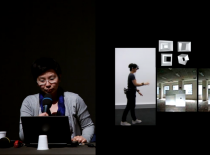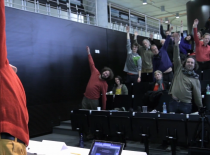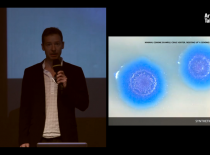Prague - December 8, 2012
Aleksander Valjamae chaired a panel Neurogenetic Media: From Research Tool to New Art Applications within International conference MutaMorphosis in Prague, Czech Republic.
Rapid development and maturation of different brain imaging techniques fostered new research domains of imaging genetics and neurocinematics. On one hand, imaging genetics links together brain activity studies in laboratory that are typically employ magnetic resonance imaging (MRI) and electroencephalography (EEG) techniques with studies on human behavior genetics. Examples of imaging genetics studies that try to link certain genes with particular brain responses include different mood disorders, human decision-making, or human trust and altruism. Many of these studies already use interactive Virtual Reality (VR) scenarios to investigate human behavior in controlled situations. On the other hand, neurocinematics analyze brain activity of multiple viewers in order to find common patterns of film experiences. Particular interest here represents an area that is very close to neurocinemantics – enactive cinema technologies that allow viewer’s experience to influence the film content in real-time using brain imaging. It is natural to think about the possible new field that would merge the two above-mentioned fields into the new field of neurogenetic media. Here, different media like interactive films, or VR can be specifically designed to trigger particular brain responses, for example, for diagnosis of schizophrenia, that will be linked to the viewers genetic data. But the reverse might be also true – viewer’s genetics might determine which film to watch in the evening. Neurogenetic media futuristic concept has many open questions and this session will aim at stimulating discussion on this topic.
- Tags:




 Copyright © 2025 ARTISTTALK. All Rights Reserved.
Copyright © 2025 ARTISTTALK. All Rights Reserved.
0 Comments
You can be the first one to leave a comment.